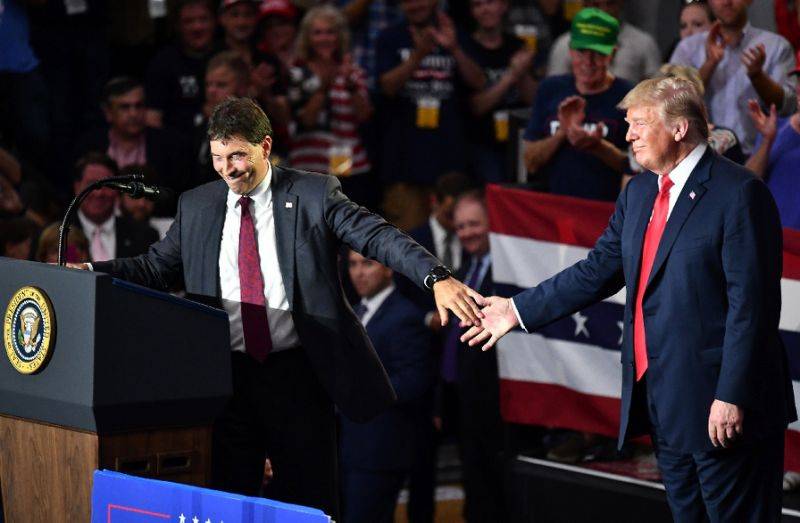A special congressional election in an Ohio district that solidly backed Donald Trump in 2016 remained too close to call early Wednesday hours after polls closed, an ominous sign for the president and Republicans ahead of November's midterms.
Even as Republican Troy Balderson -- who was leading by 0.9 percentage points, or some 1,700 votes -- declared victory over Democrat Danny O'Connor, all signs point to the vulnerability for Republicans in the coming three months.
Tuesday's political battleground, an affluent suburban district which is about 88 percent white, has been in Republican control for more than three decades.
By all accounts, it should be reliable Trump country, and the president won it by 11 percentage points in 2016.
But that margin collapsed in the race to replace Republican congressman Pat Tiberi, who resigned in January. Democrats took it as a sign of mounting voter frustration with Trump and the direction in which he and his administration were taking the country.
The race carries immense implications. It is the final direct face-off between Republicans and Democrats before the November midterms, and Trump's party was holding its breath about a race that was turning out to be a referendum on the president.
Despite no projections of victory by US networks or Ohio's secretary of state, which reportedly acknowledged thousands of absentee and provisional ballots were outstanding, both Trump and Balderson took to Twitter to declare victory.
"Congratulations to Troy Balderson on a great win in Ohio. A very special and important race!" Trump said.
"I am honored for the opportunity to represent Ohio's 12th Congressional District. I will work relentlessly for everyone in this district," said Balderson in a statement posted on the social network.
"Congratulations to Danny O'Connor on running a hard race," he added.
But O'Connor, 31, did not directly concede when he addressed his supporters, saying the race was essentially a tie.
"We're not stopping now," he said.
"Tomorrow we rest, and then we keep fighting through to November."
Both candidates are expected to face off again in three months' time for the right to represent Ohio's 12th district for the next two years in Congress.
The battle has emerged as a potential harbinger of the outcome of national elections in November that will determine which party controls Congress.
Democrats have been counting on a "blue wave" propelled by grassroots activism, while Republicans are struggling to tread water.
"This race should not have even been a contest," former moderate GOP congressman Charlie Dent told CNN about Ohio.
"It's clear the energy and intensity is on the Democratic side" nationally, Dent said, adding he was concerned that the midterms will be a referendum on the president and his performance.
Republicans control both the Senate and House of Representatives, but Trump is worried that any slippage could hurt his ability to push through his agenda -- and expose him to Democratic efforts to oust him from power.
In recent weeks, he has made several campaign appearances ahead of state primaries, endorsing congressional and gubernatorial candidates while imploring his supporters to vote.
An O'Connor victory would have been a massive shot in the arm for Democrats seeking to take back the House.
"That Dems are even competitive in Ohio's 12th district is an indication that the blue wave may in fact be coming," said University of Akron political science professor David Cohen.
The Republicans' challenge is to hold their House majority, but experts say that appears increasingly difficult. Democrats need to flip 23 seats nationally to reclaim the 435-seat House.
Democratic muscle
On Friday, RealClearPolitics put the generic ballot -- a poll of whether Americans will vote for Democrats or Republicans for Congress -- in favor of Democrats by 6.1 percentage points.
Democrats have already shown their muscle in several races over the past year, winning key special elections in Republican-leaning southwestern Pennsylvania and deep-red Alabama, and coming unexpectedly close in others.
Trump was well aware he needed a victory in Ohio, if only to tamp down the sense of panic over the looming midterms.
In addition to Balderson, Trump endorsed a more provocative Republican candidate on a primary ballot.
Kansas Attorney General Kris Kobach -- known for his divisive positions on immigration and voting rights -- was neck and neck in his primary race to unseat a Republican incumbent governor.
Republican and Democratic primary elections were also being held in Michigan, Missouri and Washington state.






